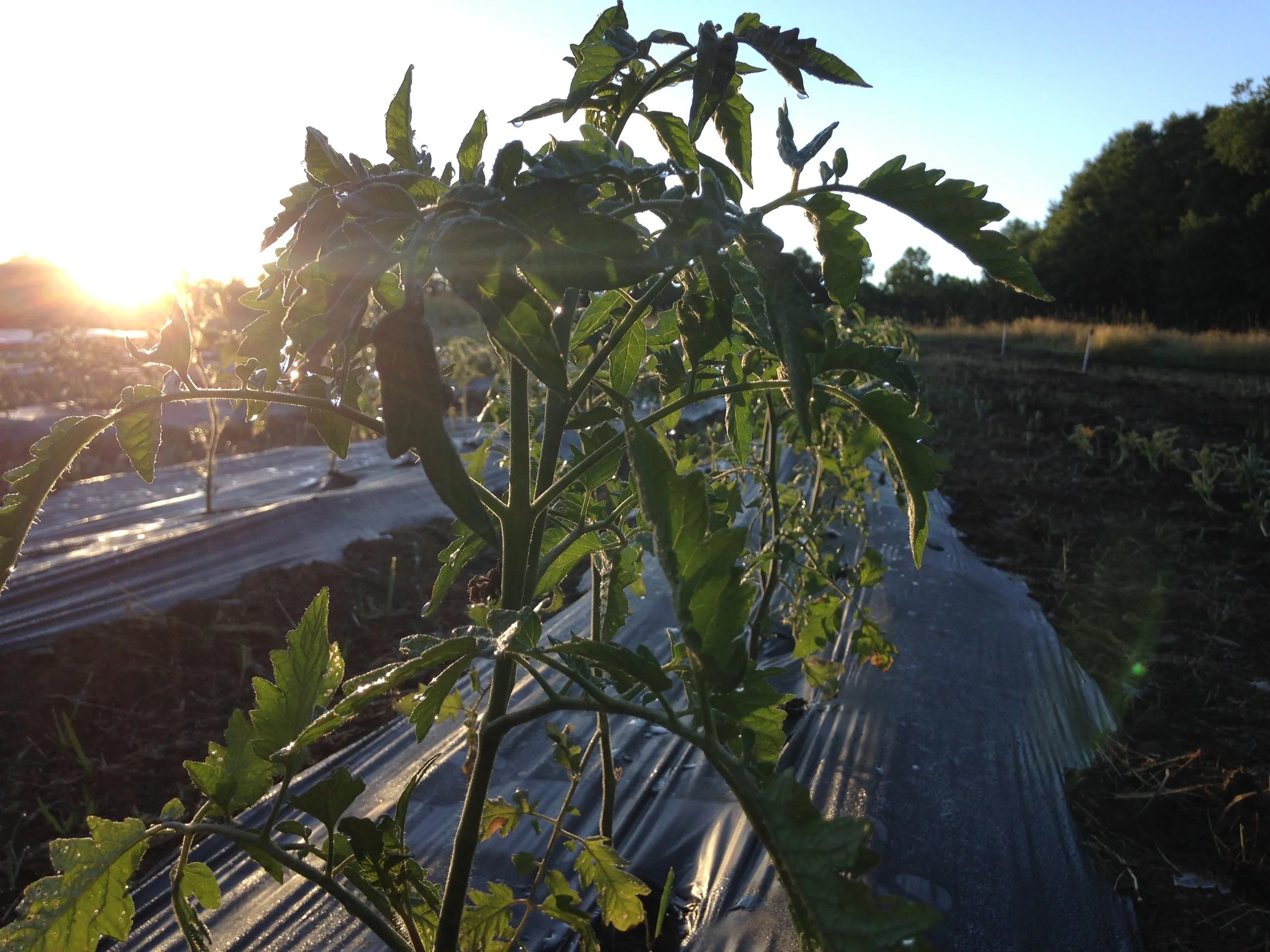The beans in the high tunnel germinated well, and outpaced the weeds for a time. (This is likely thanks to new 1-inch water line. I’ll write about that very soon because we’ve noticed a huge difference.)
When the beans were about 2 to 3 inches tall, we pushed a wheel hoe between each row and down the pathways. This tool does a fantastic job of uprooting relatively small to medium weeds.
After working over the beds with a wheel hoe, we used a collinear hoe to get in close to the baby beans. A collinear hoe has a long, thin blade that’s collinear to the earth. It’s a precise tool, unlike traditional, heavy, clunky hoes. It is one of our favorite tools. The hoe linked above also lets you stand upright. If you have a home garden, you may want to consider a collinear hoe.
But a word of caution. While wheel and collinear hoes are wonderful tools, you have to pace yourself, just like with any garden task. If you don’t, you risk injury. Slow and steady wins the race against weeds.
We also weeded these beans at least twice by hand, mainly to pluck out stubborn grass. To keep the grass from taking root again, we remove it by the bucketful. (All those clipped bits of grass are from when Jason used the weed trimmer along the sides of the tunnel.)
In the past, we’ve basically gone through this same process only to have deer mow down every last bean. The only beans that would survive were the ones that happened to be weedy enough that the deer didn’t notice them. What a relief to go through all this work and know they’re protected in the deer fence.
~ Stella

